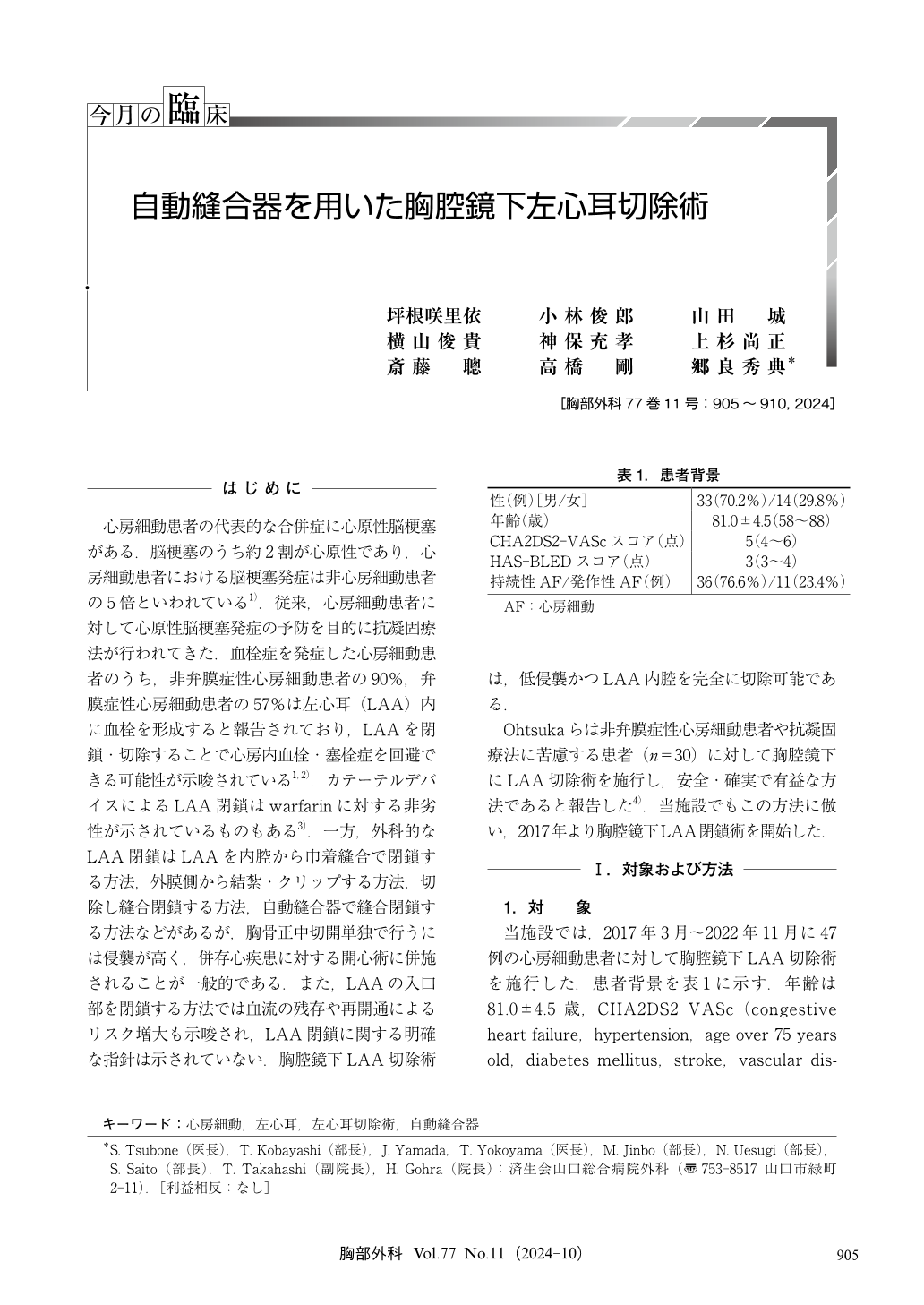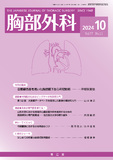Japanese
English
- 有料閲覧
- Abstract 文献概要
- 1ページ目 Look Inside
- 参考文献 Reference
心房細動患者の代表的な合併症に心原性脳梗塞がある.脳梗塞のうち約2割が心原性であり,心房細動患者における脳梗塞発症は非心房細動患者の5倍といわれている1).従来,心房細動患者に対して心原性脳梗塞発症の予防を目的に抗凝固療法が行われてきた.血栓症を発症した心房細動患者のうち,非弁膜症性心房細動患者の90%,弁膜症性心房細動患者の57%は左心耳(LAA)内に血栓を形成すると報告されており,LAAを閉鎖・切除することで心房内血栓・塞栓症を回避できる可能性が示唆されている1,2).カテーテルデバイスによるLAA閉鎖はwarfarinに対する非劣性が示されているものもある3).一方,外科的なLAA閉鎖はLAAを内腔から巾着縫合で閉鎖する方法,外膜側から結紮・クリップする方法,切除し縫合閉鎖する方法,自動縫合器で縫合閉鎖する方法などがあるが,胸骨正中切開単独で行うには侵襲が高く,併存心疾患に対する開心術に併施されることが一般的である.また,LAAの入口部を閉鎖する方法では血流の残存や再開通によるリスク増大も示唆され,LAA閉鎖に関する明確な指針は示されていない.胸腔鏡下LAA切除術は,低侵襲かつLAA内腔を完全に切除可能である.
The left atrial appendage (LAA), a major source of thrombus formation, is also a common site for ectopic foci that initiate and maintain atrial fibrillation (AF). Depending on the patient’s condition, various methods are available to exclude LAA, and each of these means is associated with advantages and disadvantages. We performed thoracoscopic stand-alone LAA amputation in 47 patients with AF, who were at risk of stroke with or without contraindications to anticoagulation therapy (between March 2017 and November 2022). A thoracoscopic procedure was completed in 46 patients, and only one patient required open surgery. Anticoagulation therapy was discontinued in 36 patients (76.6%);however, one patient developed stroke, which necessitated resumption of anticoagulation therapy. Catheter ablation before or after thoracic LAA amputation was performed in 16 patients, and 13 (81.3%) patients continued to show regular sinus rhythm during follow-up (median 11.5 months). Thoracoscopic stand-alone LAA amputation is minimally invasive and safe. Furthermore, combination of this procedure with conventional catheter ablation may serve as the most reliable curative therapeutic approach to AF.

© Nankodo Co., Ltd., 2024


